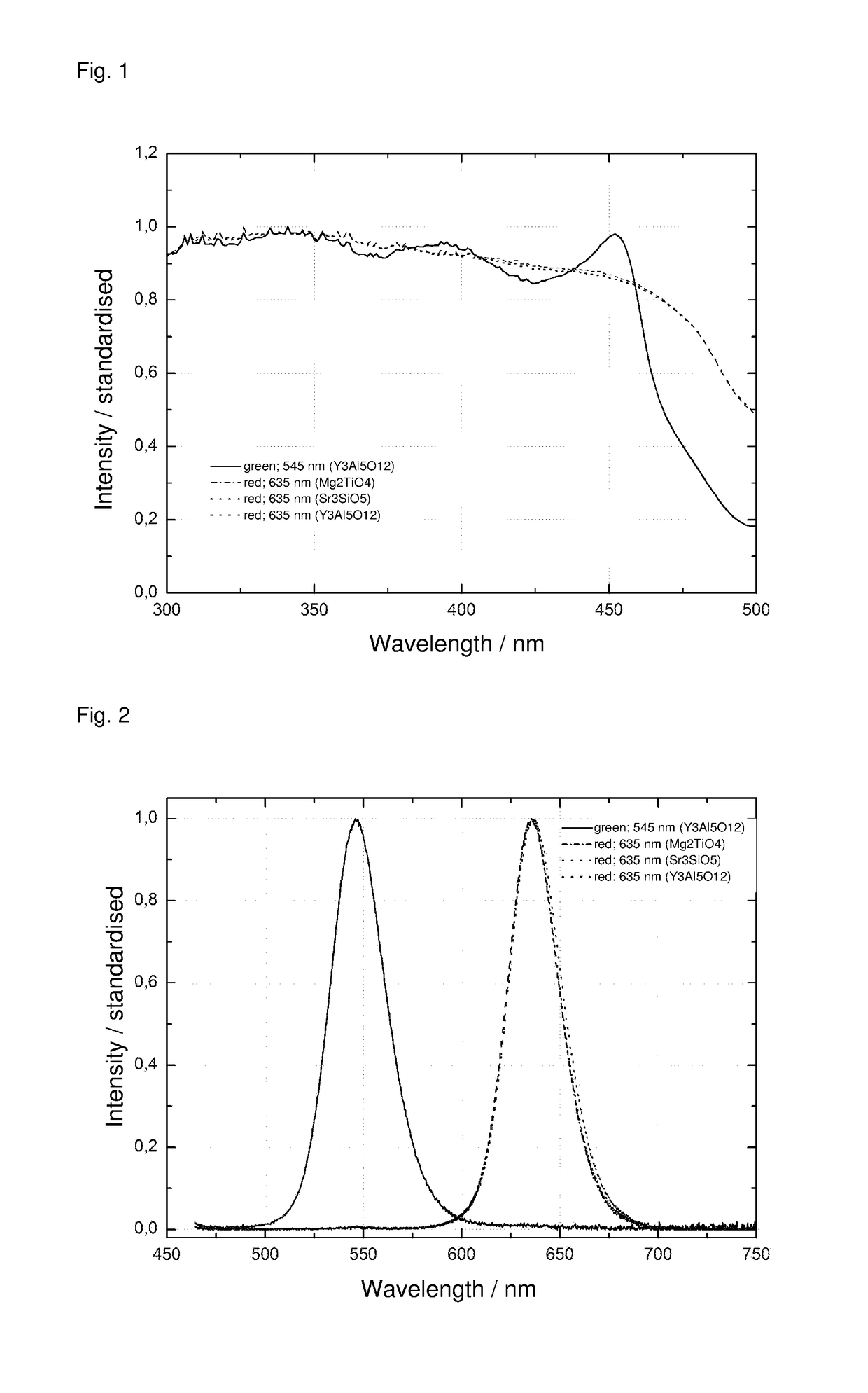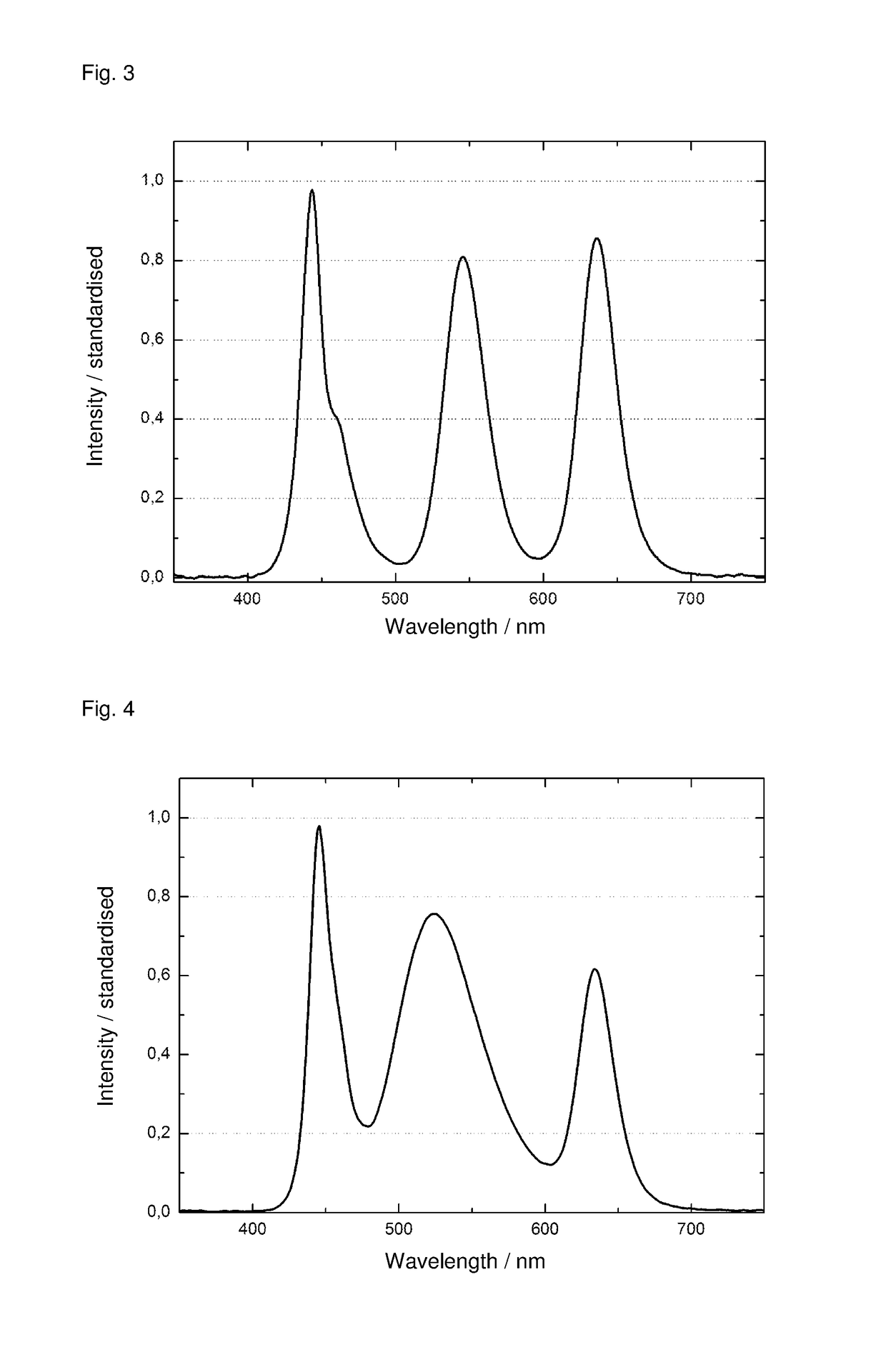Light-converting material
- Summary
- Abstract
- Description
- Claims
- Application Information
AI Technical Summary
Benefits of technology
Problems solved by technology
Method used
Image
Examples
example 1
[0117]100 g of a white pulverulent, unactivated aluminate (Y3Al5O12) are suspended in 150 ml of heptane in a 500 ml flask. 33 ml of a red quantum rod solution (3% by weight of CdSe / CdS nanorods in heptane, stabilised by means of TOP, TOPO and ODPA) are added to the suspension. This suspension is mixed at RT without vacuum for 2 h. The solvent is carefully removed in a rotary evaporator in vacuo at a water-bath temperature of 40° C. The coated garnet powder is dried overnight (vacuum / 25° C.). Finally, the coated system is sieved to a particle size of <64 μm.
example 2
[0118]15 g of a white pulverulent, unactivated silicate (Sr3SiO5) are suspended in 100 ml of water in a 250 ml flask. 4.5 ml of a red quantum rod solution (3% by weight of CdSe / CdS nanorods in water, stabilised by means of PEI) are added to the suspension. This suspension is mixed by means of a rotary evaporator at 60 rpm at RT without vacuum for 3 h. Better homogenisation is ensured by the addition of small Al2O3 beads. The solvent is carefully removed in the rotary evaporator in vacuo at a water-bath temperature of 40° C. For complete removal of the solvent, the coated silicate is left in the rotary evaporator in vacuo at RT for about 12 further hours. Finally, the coated system is sieved to a particle size of <64 μm.
example 3
[0119]10 g of a white pulverulent, unactivated titanate (Mg2TiO4) are suspended in 50 ml of toluene in a 100 ml flask. 3 ml of a red quantum rod solution (3% by weight of CdSe / CdS nanorods in toluene, stabilised by means of TOP, TOPO and ODPA) are added to the suspension. This suspension is stirred at RT without vacuum for 3 h. The coated titanate is subsequently filtered off via a frit with suction and, for complete drying, left to stand at RT in vacuo overnight. Finally, the coated system is sieved to a particle size of <64 μm.
[0120]Green:
PUM
 Login to View More
Login to View More Abstract
Description
Claims
Application Information
 Login to View More
Login to View More - R&D
- Intellectual Property
- Life Sciences
- Materials
- Tech Scout
- Unparalleled Data Quality
- Higher Quality Content
- 60% Fewer Hallucinations
Browse by: Latest US Patents, China's latest patents, Technical Efficacy Thesaurus, Application Domain, Technology Topic, Popular Technical Reports.
© 2025 PatSnap. All rights reserved.Legal|Privacy policy|Modern Slavery Act Transparency Statement|Sitemap|About US| Contact US: help@patsnap.com



